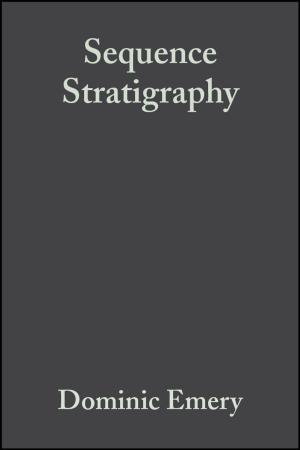Nanostructured and Subwavelength Waveguides
Fundamentals and Applications
Nonfiction, Science & Nature, Technology, Optics| Author: | Maksim Skorobogatiy | ISBN: | 9781118343241 |
| Publisher: | Wiley | Publication: | May 23, 2012 |
| Imprint: | Wiley | Language: | English |
| Author: | Maksim Skorobogatiy |
| ISBN: | 9781118343241 |
| Publisher: | Wiley |
| Publication: | May 23, 2012 |
| Imprint: | Wiley |
| Language: | English |
Optical waveguides take a prominent role in photonics because they are able to trap and to transport light efficiently between a point of excitation and a point of detection. Moreover, waveguides allow the management of many of the fundamental properties of light and allow highly controlled interaction with other optical systems. For this reason waveguides are ubiquitous in telecommunications, sensing, spectroscopy, light sources, and high power light delivery. Nanostructured and subwavelength waveguides have additional advantages; they are able to confine light at a length scale below the diffraction limit and enhance or suppress light-matter interaction, as well as manage fundamental properties of light such as speed and direction of energy and phase propagation.
This book presents semi-analytical theory and practical applications of a large number of subwavelength and nanostructured optical waveguides and fibers operating in various regions of the electromagnetic spectrum including visible, near and mid-IR and THz. A large number of approximate, while highly precise analytical expressions are derived that describe various modal properties of the planar and circular isotropic, anisotropic, and metamaterial waveguides and fibers, as well as surface waves propagating on planar, and circular interfaces. A variety of naturally occurring and artificial materials are also considered such as dielectrics, metals, polar materials, anisotropic all-dielectric and metal-dielectric metamaterials.
Contents are organized around four major themes:
- Guidance properties of subwavelength waveguides and fibers made of homogeneous, generally anisotropic materials
- Guidance properties of nanostructured waveguides and fibers using both exact geometry modelling and effective medium approximation
- Development of the effective medium approximations for various 1D and 2D nanostructured materials and extension of these approximations to shorter wavelengths
- Practical applications of subwavelength and nanostructured waveguides and fibers
Nanostructured Subwavelengths and Waveguides is unique in that it collects in a single place an extensive range of analytical solutions which are derived in various limits for many practically important and popular waveguide and fiber geometries and materials.
Optical waveguides take a prominent role in photonics because they are able to trap and to transport light efficiently between a point of excitation and a point of detection. Moreover, waveguides allow the management of many of the fundamental properties of light and allow highly controlled interaction with other optical systems. For this reason waveguides are ubiquitous in telecommunications, sensing, spectroscopy, light sources, and high power light delivery. Nanostructured and subwavelength waveguides have additional advantages; they are able to confine light at a length scale below the diffraction limit and enhance or suppress light-matter interaction, as well as manage fundamental properties of light such as speed and direction of energy and phase propagation.
This book presents semi-analytical theory and practical applications of a large number of subwavelength and nanostructured optical waveguides and fibers operating in various regions of the electromagnetic spectrum including visible, near and mid-IR and THz. A large number of approximate, while highly precise analytical expressions are derived that describe various modal properties of the planar and circular isotropic, anisotropic, and metamaterial waveguides and fibers, as well as surface waves propagating on planar, and circular interfaces. A variety of naturally occurring and artificial materials are also considered such as dielectrics, metals, polar materials, anisotropic all-dielectric and metal-dielectric metamaterials.
Contents are organized around four major themes:
- Guidance properties of subwavelength waveguides and fibers made of homogeneous, generally anisotropic materials
- Guidance properties of nanostructured waveguides and fibers using both exact geometry modelling and effective medium approximation
- Development of the effective medium approximations for various 1D and 2D nanostructured materials and extension of these approximations to shorter wavelengths
- Practical applications of subwavelength and nanostructured waveguides and fibers
Nanostructured Subwavelengths and Waveguides is unique in that it collects in a single place an extensive range of analytical solutions which are derived in various limits for many practically important and popular waveguide and fiber geometries and materials.















